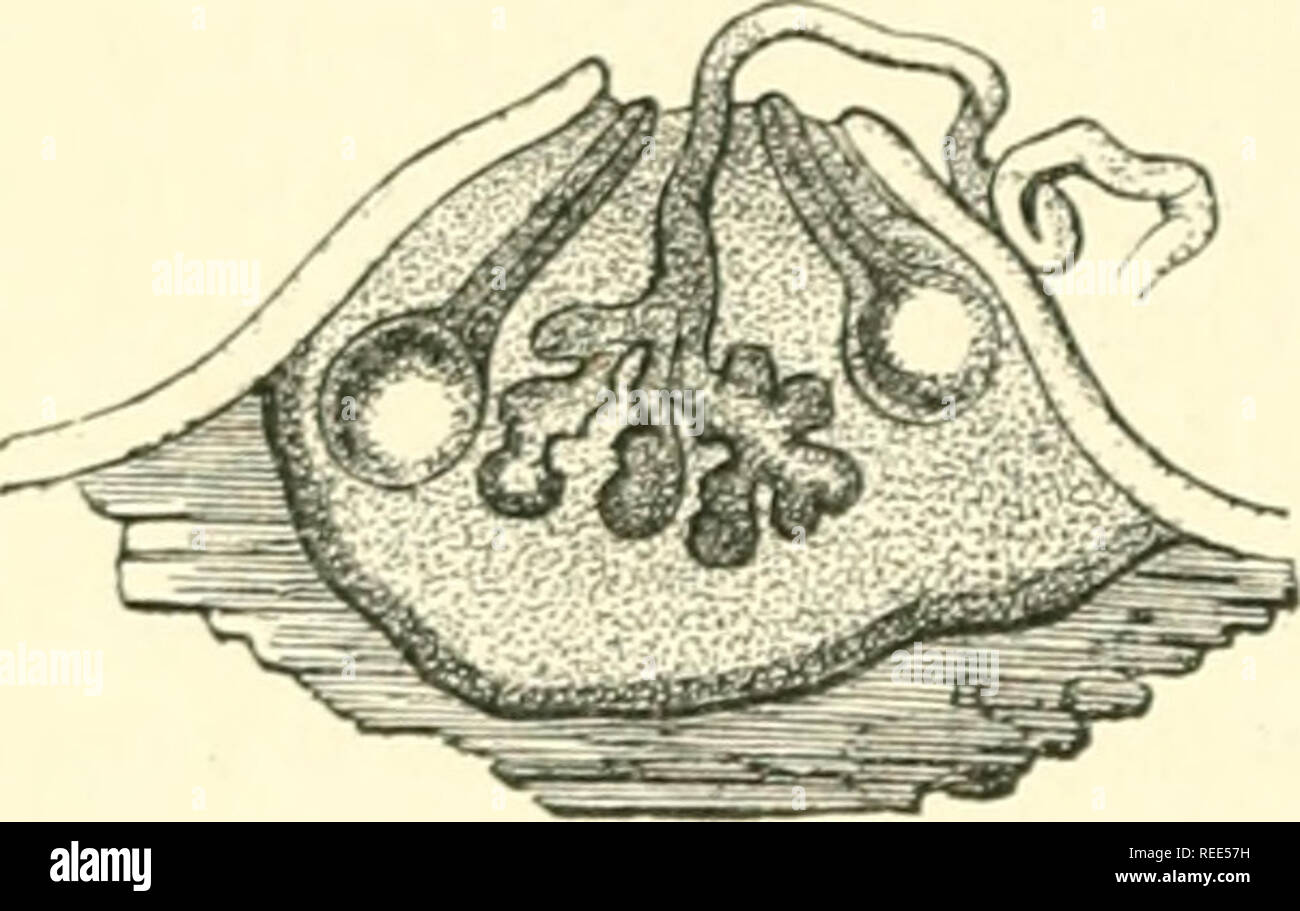. Comparative morphology and biology of the fungi, mycetozoa and bacteria. Fungi -- Morphology; Bacteria -- Morphology. 240 DIVISION II.—COURSE OF DEVELOPMENT OF FUNGI. Section LXIX. 3. Spermatia, spermogonia. Organs in every respect ex- tremely like those which are thus named in Collema, Physrna, &c. (page 211) are found in almost all the rest of the Lichen-forming Ascomycctes ; the genus Solorina may be mentioned as an exception among those in which this point has been carefully examined. These organs occur also in many species which do not form Lichens both among the Discomycetes and es

Image details
Contributor:
The Book Worm / Alamy Stock PhotoImage ID:
REE57HFile size:
7.1 MB (238.9 KB Compressed download)Releases:
Model - no | Property - noDo I need a release?Dimensions:
1988 x 1257 px | 33.7 x 21.3 cm | 13.3 x 8.4 inches | 150dpiMore information:
This image is a public domain image, which means either that copyright has expired in the image or the copyright holder has waived their copyright. Alamy charges you a fee for access to the high resolution copy of the image.
This image could have imperfections as it’s either historical or reportage.
. Comparative morphology and biology of the fungi, mycetozoa and bacteria. Fungi -- Morphology; Bacteria -- Morphology. 240 DIVISION II.—COURSE OF DEVELOPMENT OF FUNGI. Section LXIX. 3. Spermatia, spermogonia. Organs in every respect ex- tremely like those which are thus named in Collema, Physrna, &c. (page 211) are found in almost all the rest of the Lichen-forming Ascomycctes ; the genus Solorina may be mentioned as an exception among those in which this point has been carefully examined. These organs occur also in many species which do not form Lichens both among the Discomycetes and especially among the Pyrenomycetes. On the ground of these points of resemblance the organs in question are entitled to the names given to the corresponding organs of the Collemeae and Polystigma, and are at least to be regarded as homologous with them. All these organs agree first of all in the formation of spermatia, small ellipsoid, or more commonly narrowly rod-shaped, bodies, which are often also bent, as in Rhytisma, Diatrype (Fig. 114), and Polystigma. Their absolute size varies much in the different species; those that have the form of narrow rods are according to Tulasne 6 or 7 // in length in species of Diatrype, and as much as 30 i in Polystigma rubrum, or less than 6 i in some species of Gyrophora (Fig. 100); the ellipsoid spermatia of Peltigera have a length of 12-22 i. Their structure, as far as it can be ascertained, is similar to that of very small and delicate spores with homogeneous. Please note that these images are extracted from scanned page images that may have been digitally enhanced for readability - coloration and appearance of these illustrations may not perfectly resemble the original work.. Bary, A. de (Anton), 1831-1888; Balfour, Isaac Bayley, 1853-1922. Oxford : Clarendon Press